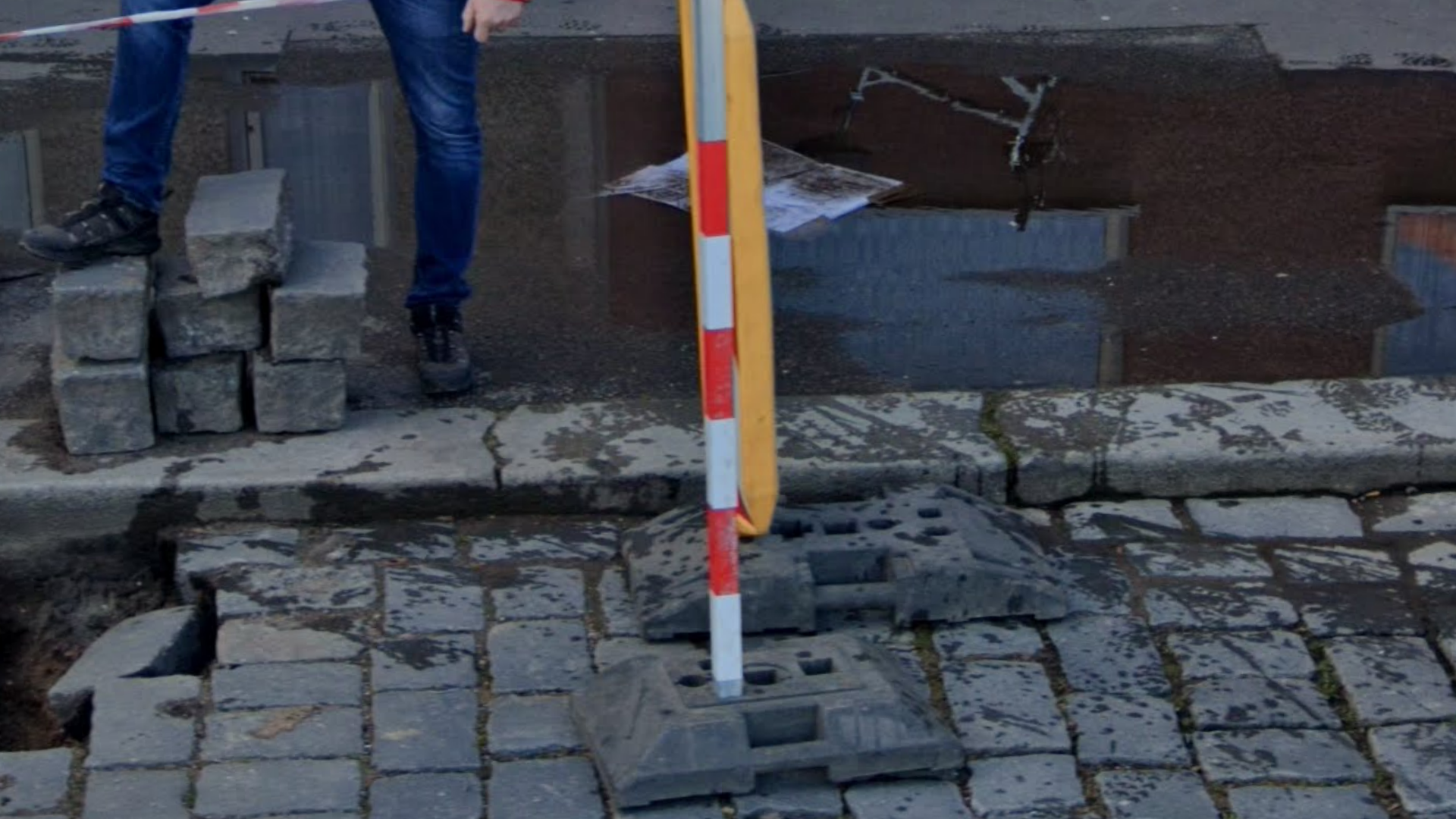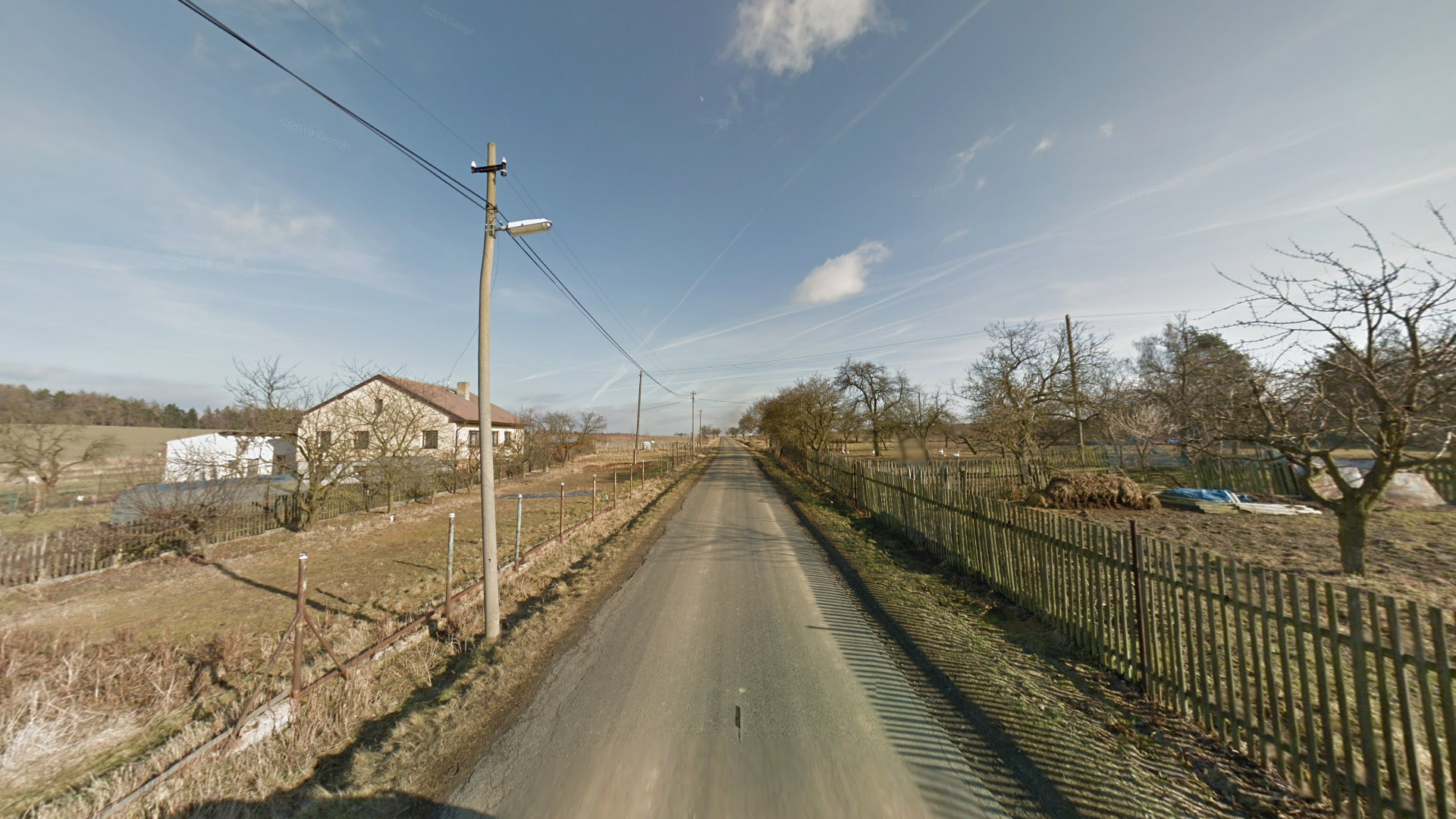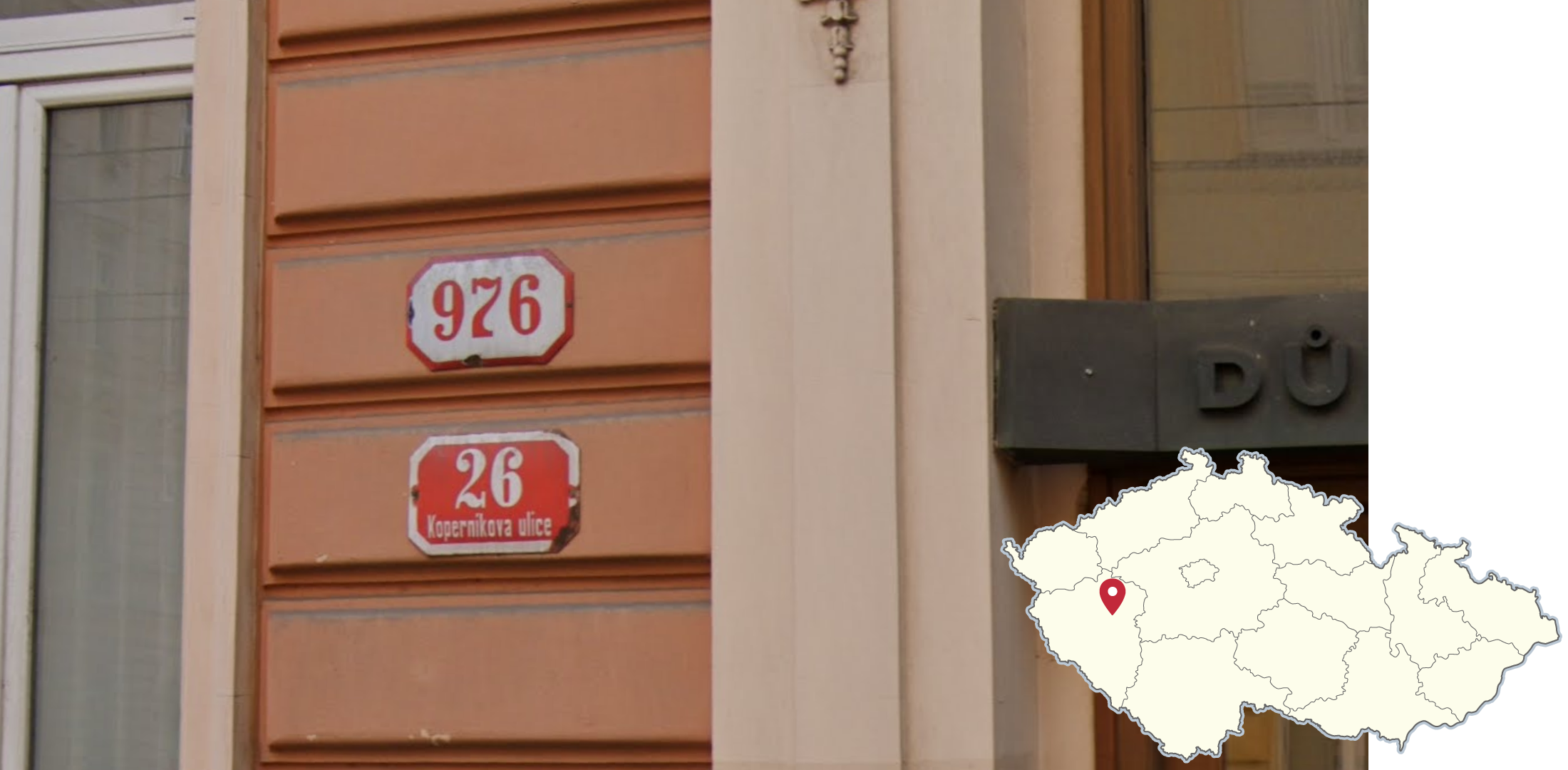
Czechia
Step 1.1 - Similar to Slovakia
Important note: The following information is commonly shared with Slovakia. While there are occasional differences, these tips are used to identify both countries.
Czechia and Slovakia both use a special kind of type B guardrail, which is wider than the normal type. No other European countries use the same kind.
NOTE: While Slovakia occasionally uses other types of guardrails, Czechia is fairly consistent. For a good overview of European guardrails, see this infographic.
You may also see concrete poles with trident poletops, with two arms angled upwards. The number of insulators and other details will vary, however the general shape will be the same. Out of the pole tops listed, these are the least common, but unique to the two countries.
Czech and Slovak chevrons are white with red arrows. Less commonly, you may find red on yellow chevrons.
Hiking markers, made up of one colourful strip between two white ones, are commonly found in Czechia and Slovakia. They sometimes form an arrow.
NOTE: While by far being the most common in Czechia and Slovakia, similar signs can be found in other European countries such as Poland, Hungary and Germany.
Like all of the former Eastern bloc, prefabricated panel apartment buildings are a common sight in urban areas. What distinguishes Czechia and Slovakia is the relatively good maintenance often combined with vibrant colours and patterns. Some smaller buildings also adhere to this style.
NOTE: To a lesser extent, you can find this kind of architecture in neighbouring countries, like Poland and Hungary.
Step 1.2 - Different than Slovakia
Important note: The following information is not commonly shared with Slovakia. While there are occasional similarities, these tips are used to identify Czechia rather than Slovakia.
Czech and Slovak are mutually intelligible Slavic languages with several similarities such as acute accents above vowels (á, é, í, ó, ú, ý). However, they both have some distinct letters:
Czech uses the letters Ř, Ě and Ů;
Slovak uses the letters Ľ, Ô, Ä, Ŕ and Ĺ.
NOTE: Acute accents on vowels are not found in South Slavic languages.
The borders of Czech road signs are almost always separated from the edge by a strip in the same colour as the sign background.
NOTE: In Slovakia, it is more common for signs to have the border on the edge of the sign.
The most common type of street sign in Czechia are bright red signs, which can either be wide and stuck on walls, or thin and attached to signs posts. Note that other street signs do occur in some areas, most notably in Brno. Similarly designed blue signs are also fairly common.
Furthermore, the Czech word for street is “ulice”, unlike most Slavic languages which use “ulica”. This word is usually omitted, but finding “ulice” on street signs is still possible.
NOTE: Slovakia typically uses white street signs with a red border and blue text.
House numbers in Czechia are generally written on blue or red signs with thin white borders.
NOTE: On the contrary, Slovak house numbers are typically written on white signs with a thin red or black border.
Czech pedestrian signs have five stripes.
NOTE: The stripes on Slovak pedestrian signs are a smaller scale. This is noticeable when comparing the outermost stripes to the edge of the triangle.
Czech road signs have a fairly thin font.
NOTE: Slovak signs normally have a much bolder font. The same font is however used in Luxembourg and Germany.
Czech kilometre markers have a yellow outline outside the black frame and do not have a black horizontal middle line.
NOTE: Slovak kilometre markers typically have a black horizontal middle line and do not have a yellow outline.
Bicycle signs in Czechia are yellow. You may also find markings similar to hiking markers, but with yellow stripes instead of white.
Czech railway crossing signs do not have a background.
NOTE: Slovak railway crossing signs have a white rectangular background.
The first digit of road numbers can be anything between 1-6. Though, roads starting with 6 are scattered across most of the country. There are three exceptions, being roads 7, 8 and 9, which all start in Prague and go to the north and northwest.
Roads starting with 1-5 are mostly distributed as the map shows, with some overlap and exceptions mainly due to longer, two-digit roads.
Four-digit bike paths follow a geographical pattern, increasing clockwise, starting in Southern Bohemia. They do not show up on Google Maps, and as such remembering the general pattern is necessary to make them useful. Single- and two-digit bike paths are shown on this map, however they are far less useful to know.
NOTE: Paths starting with A are unique to Prague, regardless how big the number. Some paths spill into neighbouring regions.
Much of the northern Bohemian landscape can be characterised by a rolling landscape combined with steep solitary hills.
NOTE: The hills can sometimes have castles on the top, which look absolutely awesome.
Town houses in Moravia typically have two distinctive features:
Houses have the long side parallel to the road and are often connected in large groups.
Front doors are abnormally large, similar in size and shape to barn doors.
NOTE: This is also common in northeastern Austria.
Streets in downtown Prague are commonly paved with grey and white marble stones, which is also typical for Portugal. They’re often arranged in intricate square mosaics, but some sections are far more plain.
NOTE: Similar pavement can be found in much lower volume in other towns too. Consider the apparent size of the city before guessing Prague.
Cube shaped, functionalist red brick houses are found in Zlín, as a remainder of the shoemaking company Baťa’s houses for their workers. In the city centre, high rise buildings are constructed in similar style.
NOTE: So-called Bata-villes were also constructed outside of Czechia, most notably in Slovakia and France.
Red house numbers with a dividing line and a Roman numeral are unique to Liberec.
The dividing line is an important identifying factor, as Roman numerals can be found on house numbers in other cities.
Polish bilingual street signs are found in Český Těšín, and very rarely in other nearby towns.
GeoGuessr’s own official maps are not very good, for a variety of reasons. Plonk It recommends the following maps instead:


























































